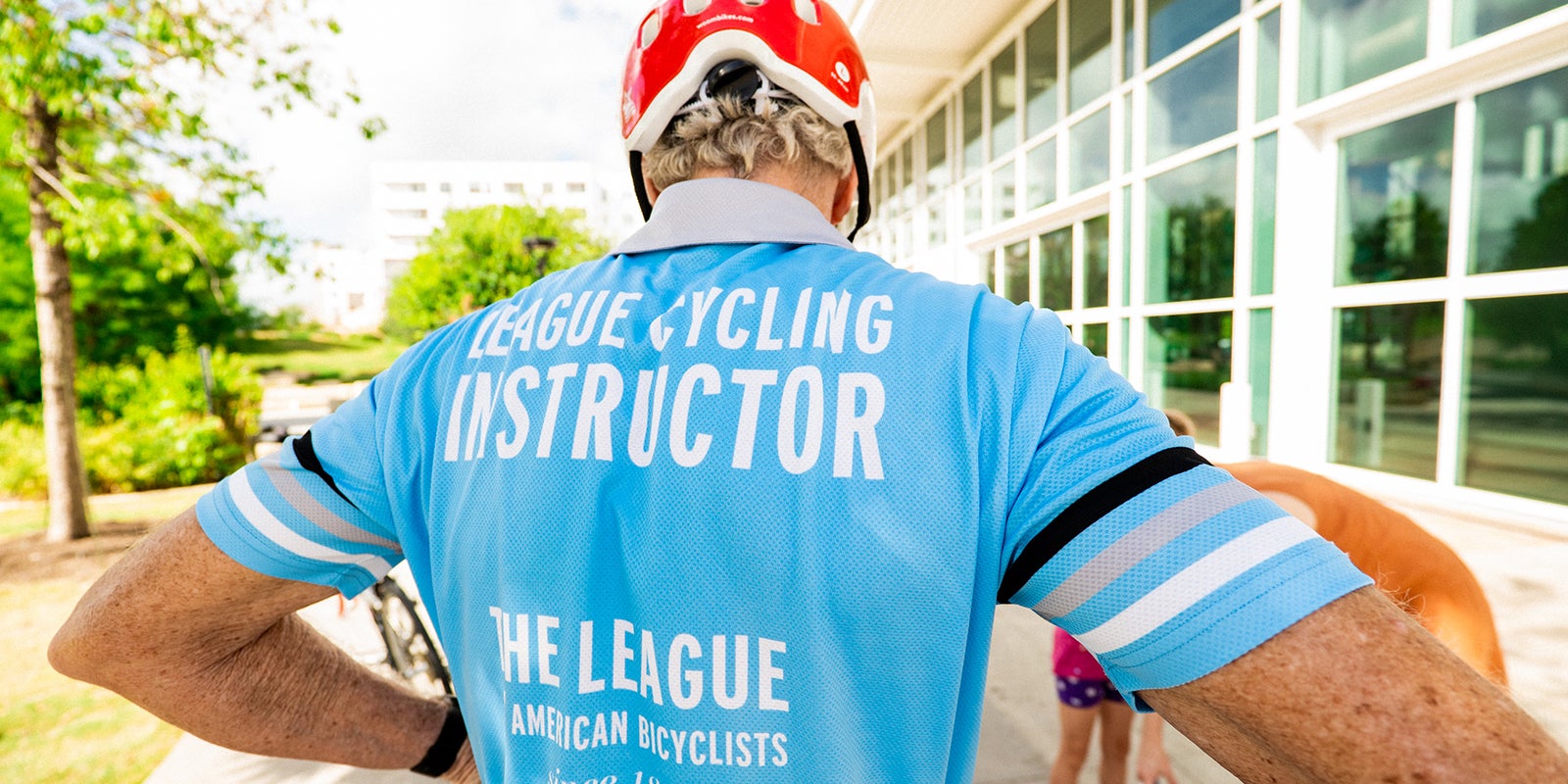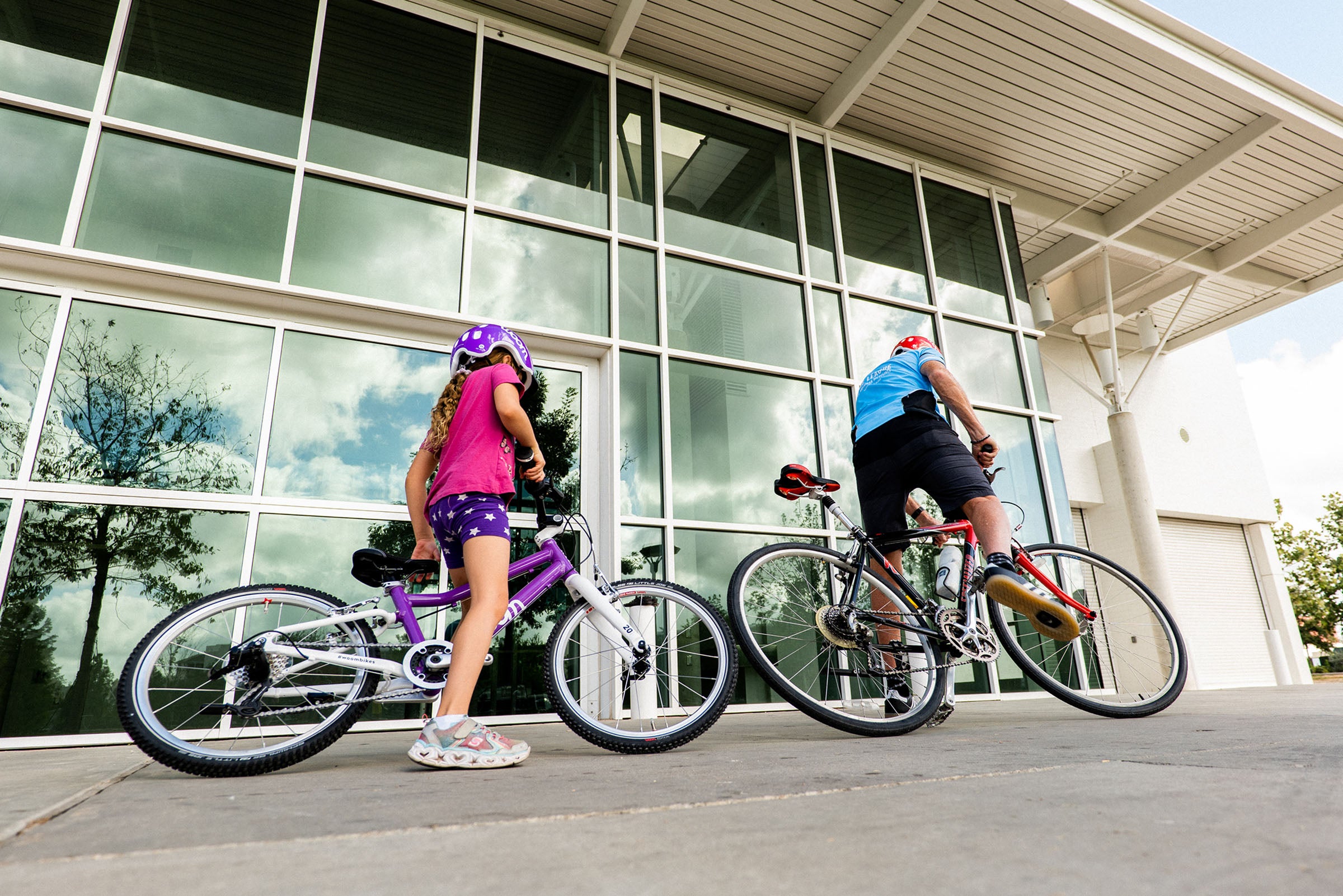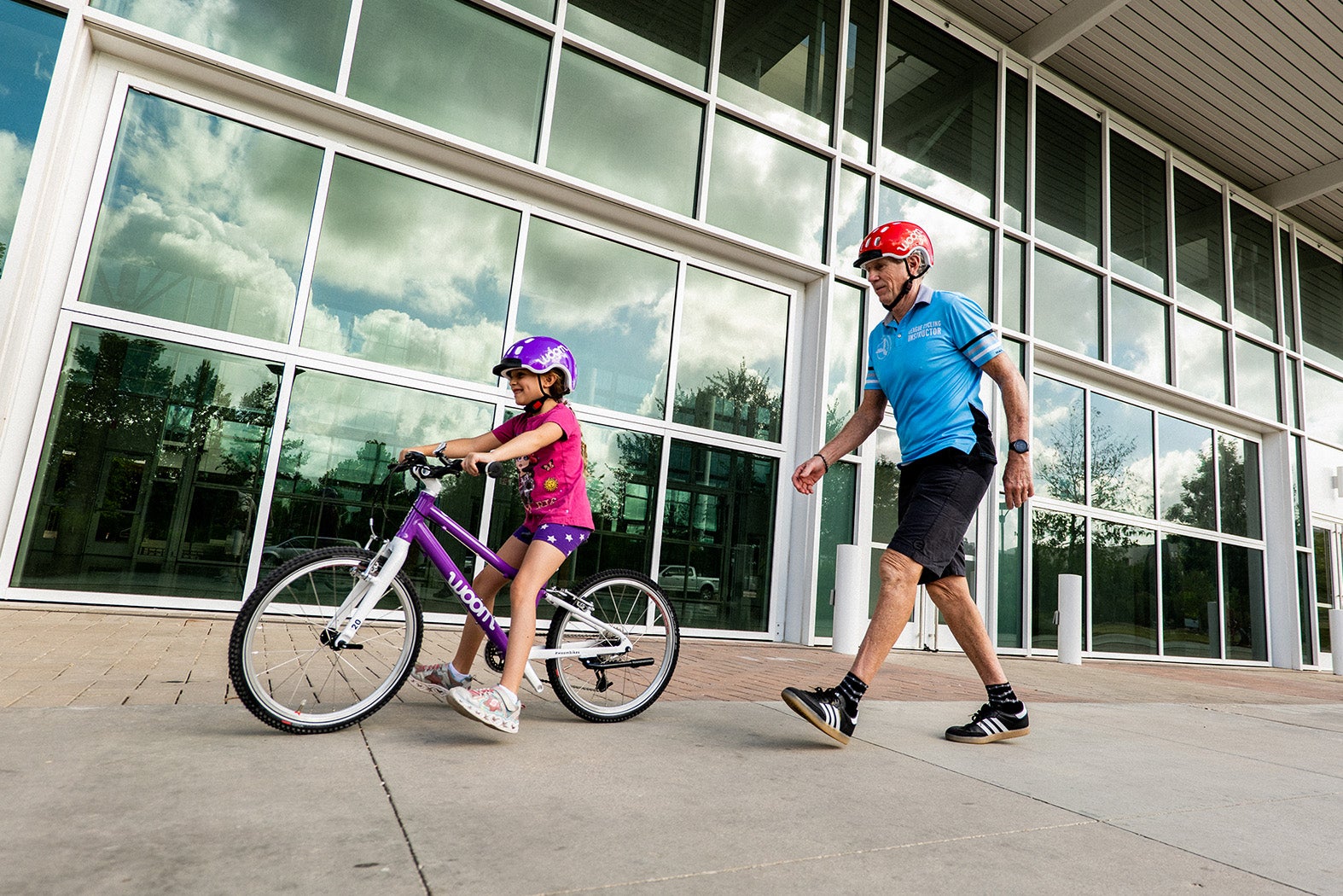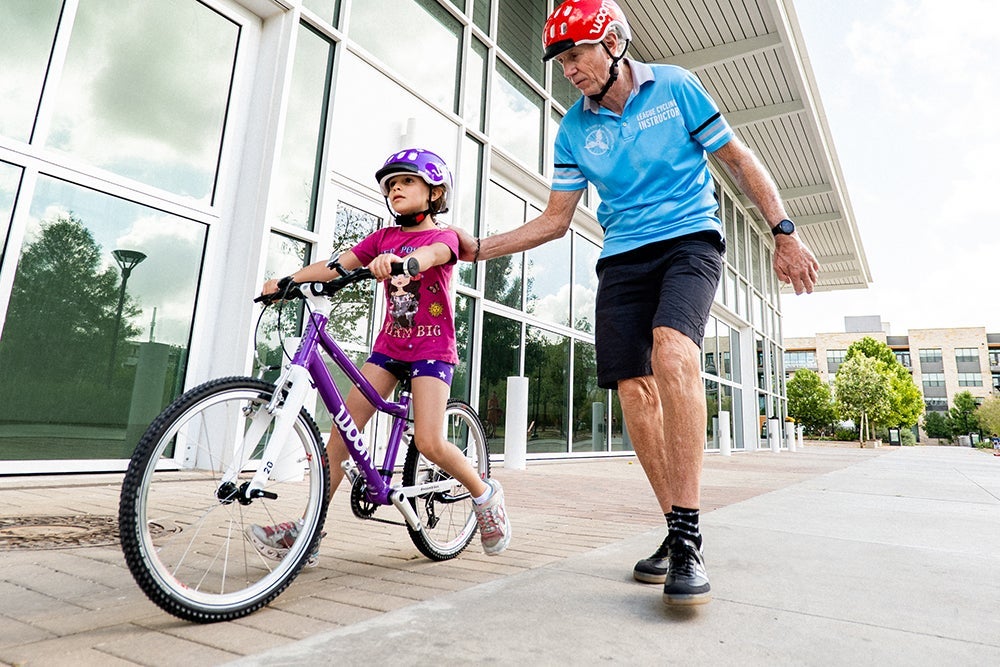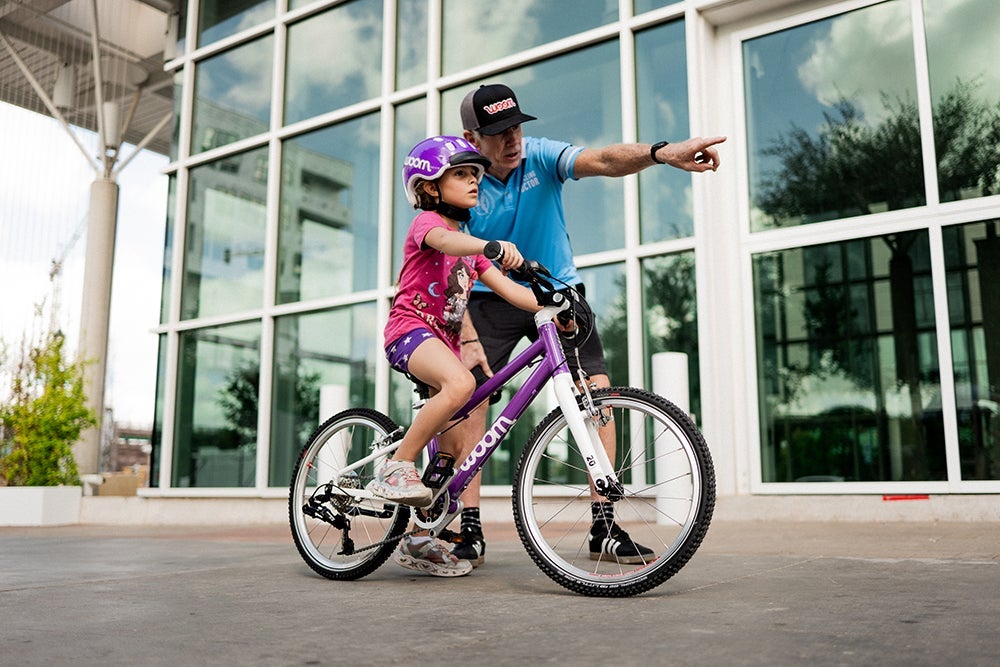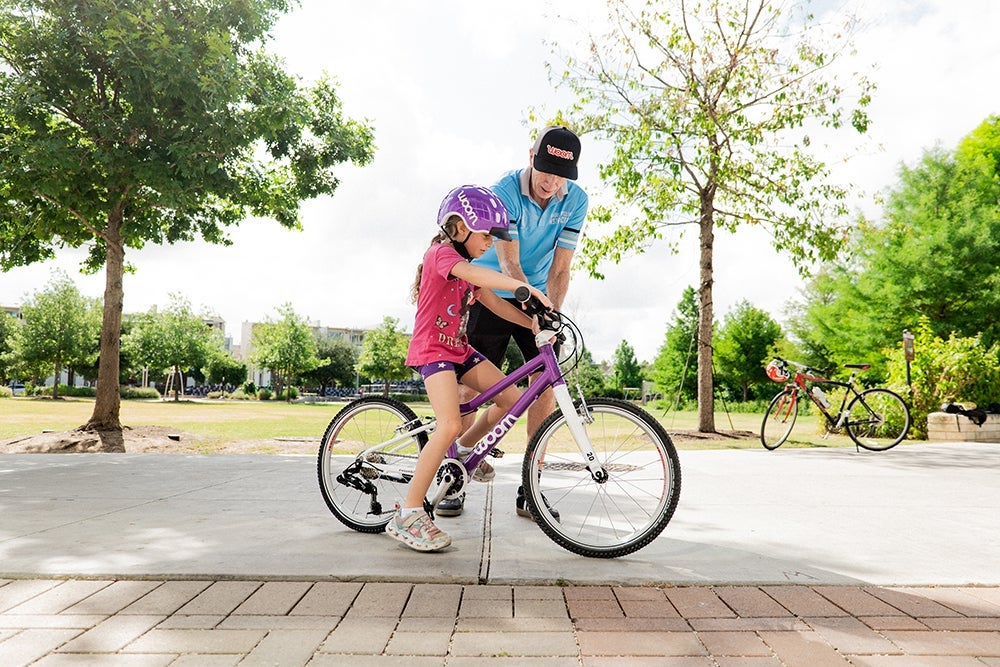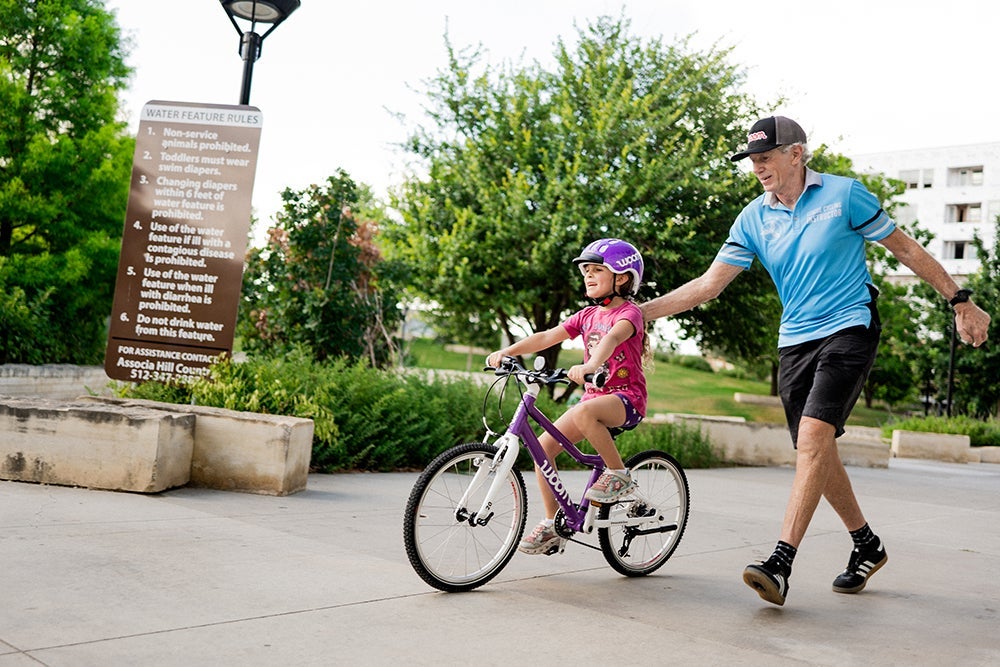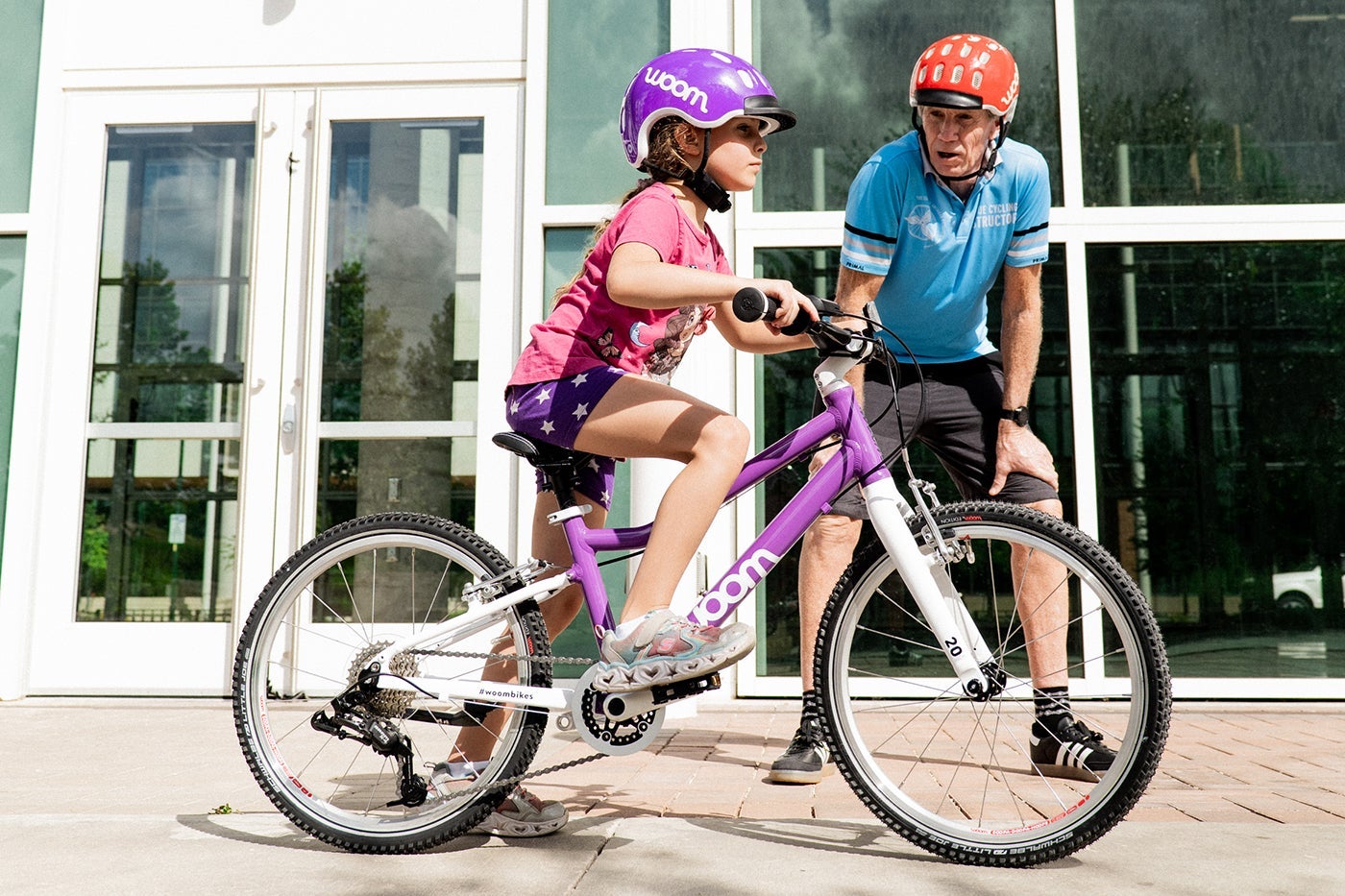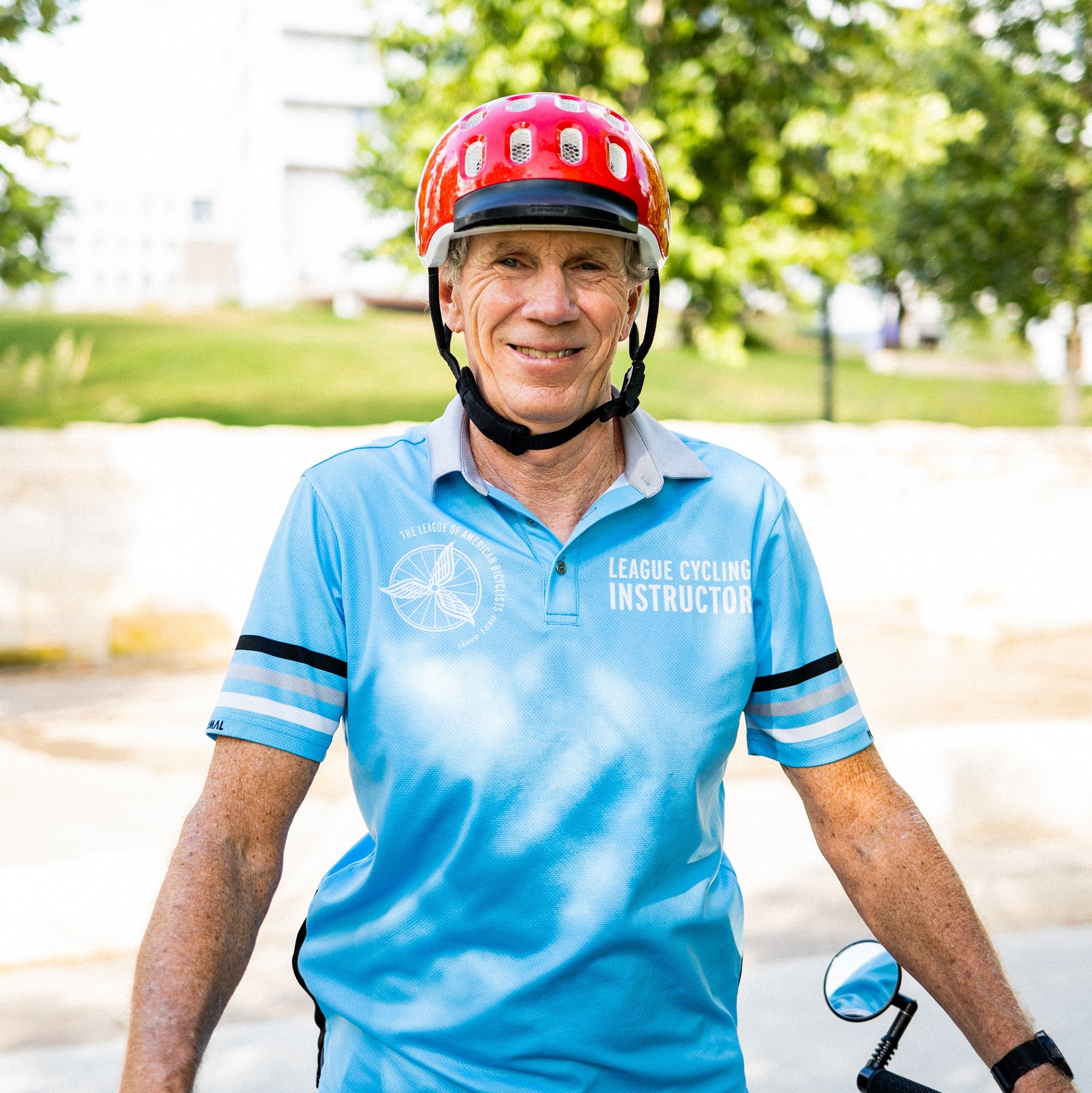How to Teach a Kid to Ride a Bike
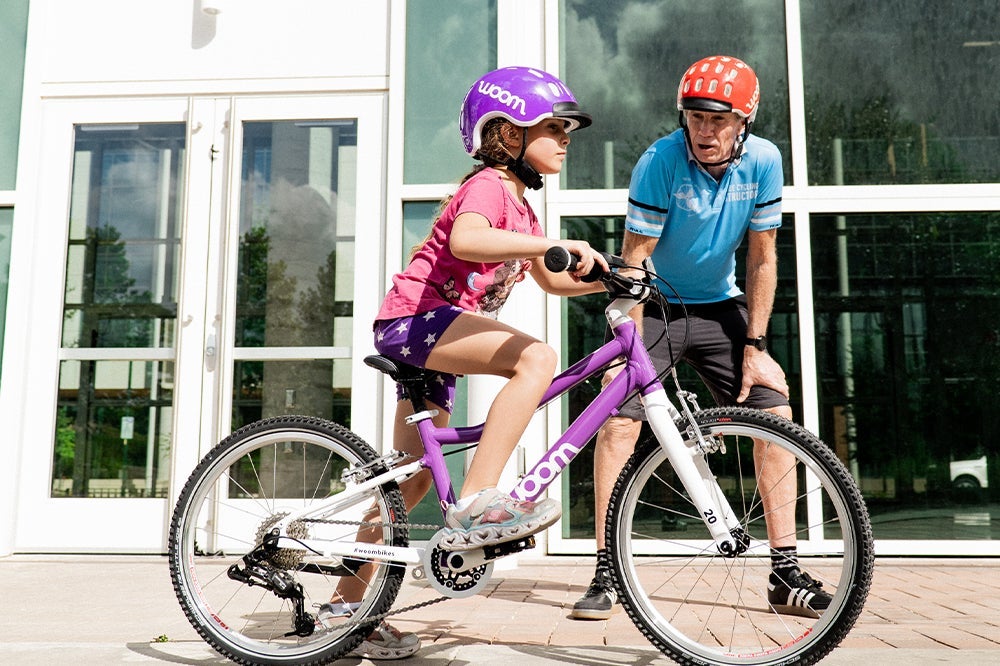
We all know the saying “it’s like riding a bike” — something we’ve learned, haven’t forgotten, and can pick up anytime. But learning how to ride a bike isn’t as simple! And neither is helping a kiddo learn this new skill for the first time. How to teach a kid to ride a bike? Let’s dive in.
Teaching your child how to ride a bike doesn’t have to be filled with tears and tension. It should be an exciting, coming-of-age experience for you, your new Rider, and your family. Riding a bike should be fun. You won’t get very far if you or your child are stressed out and trying to force it to happen! Keep sessions short, offering guidance and focusing on these proven best practices. And, of course, give lots of encouragement and affirmation!
To help you confidently approach the teaching process, one of our favorite cycling instructors, Doug Ballew, shares his best tips. He has coordinated several bike safety and education programs with schools and communities and now spends his spare time teaching children how to ride with private lessons in Austin, TX. Doug is passionate about coaching parents to help their kiddos start soaring down the sidewalk with a smile!
Balance Bikes Are Better Than Training Wheels
When you were a young Rider, you possibly learned to ride with training wheels. This was the go-to way to learn for many years. But in recent years, the value of balance training has come to light. We’ve discovered that focusing on balance without training wheels and pedals leads to much faster learning than starting with training wheels! Because of this, we recommend Doug’s balance-first method of teaching.
Teaching an Older Rider vs. Younger Rider
Teaching your child to ride a bike — no matter their age — means thinking on their level and understanding their cognitive and physical ability. Older children generally may pick it up more quickly than younger children, but younger children can also be successful when they stick with it.
How to teach a kid to ride a bike? Let them set their own pace. Three-year-olds may just not be interested yet, and that’s OK. The key is reducing barriers by providing kiddos with an environment and the gear to learn without pushing them into it.
What You’ll Need
Having the proper gear makes learning to ride a bike easier and safer. Here’s everything you need to help your new Rider pedal into success.
A Beginner Bike
Sizing is the main factor when purchasing a bike. For learning balance, your kiddo needs a lower seat when they’re first learning and a higher seat when they’ve learned to balance and pedal easily. The woom bike catalog has overlapping size ranges, so it's best to err on the smaller size if your child falls between sizes when they are still learning.
The woom 1 is perfect for these early days of riding for kiddos as young as 18 months old. These balance bikes have no training wheels or pedals, lower seats, and a rear brake to practice braking right from the get-go. If your child is a little older or bigger when learning to ride, upgrade to the woom 1 PLUS.
We also know that not all kids learn to ride a bike while they are small enough to use a balance bike. All new woom bikes arrive with their pedals in a separate box. If your kiddo isn’t ready for pedals yet, Doug recommends waiting to install them at first, so your future pedaler can begin with balance, too.
A Helmet
Safety is of the utmost importance, even if your Rider is not soaring down the street solo yet. Make sure your child has the right-sized helmet and adjust it to fit securely. The woom KIDS’ Helmet has a unique magnetic closure system that’s super easy for kids to hook up themselves!
Close-Toed Shoes
Just like adults, children should wear snug-fitting, close-toed shoes while riding. Once they start pedaling, make sure any laces are securely tied and not dragging long enough to catch in the pedals or gears.
Extra Protective Gear
Almost every new Rider will take a tumble off their bike at some point, and scratches and scrapes leave some kids nervous about getting back on the horse. The NEEBOWS Knee Pad and NEEBOWS Elbow Pad sets, plus a pair of TENS Bike Gloves, can provide extra protection in sensitive areas that will take the sting out of the fall and avoid serious injury.
Bonus: Surfboard
No, we’re not telling you to buy an actual surfboard to teach your child to ride a bike. We’re talking about woom’s SURFBOARD Footrest! This extra accessory comes with the woom 1 PLUS and is compatible with the woom 1. It makes practicing balancing more comfortable and secure-feeling for young ones. By providing kids a place for their feet to rest, novice Riders can extend their coasting time and get used to sitting in a more upright position. Plus, it boosts the fun factor and allows them to glide longer when they get the hang of balancing!
Where to Practice
Find a flat, paved area with plenty of obstacle-free space for your kiddo to practice riding. Parks with level, paved sidewalks, basketball courts, or empty parking lots are all great options. Just make sure there isn’t a lot of traffic nearby or a basketball game in progress.
